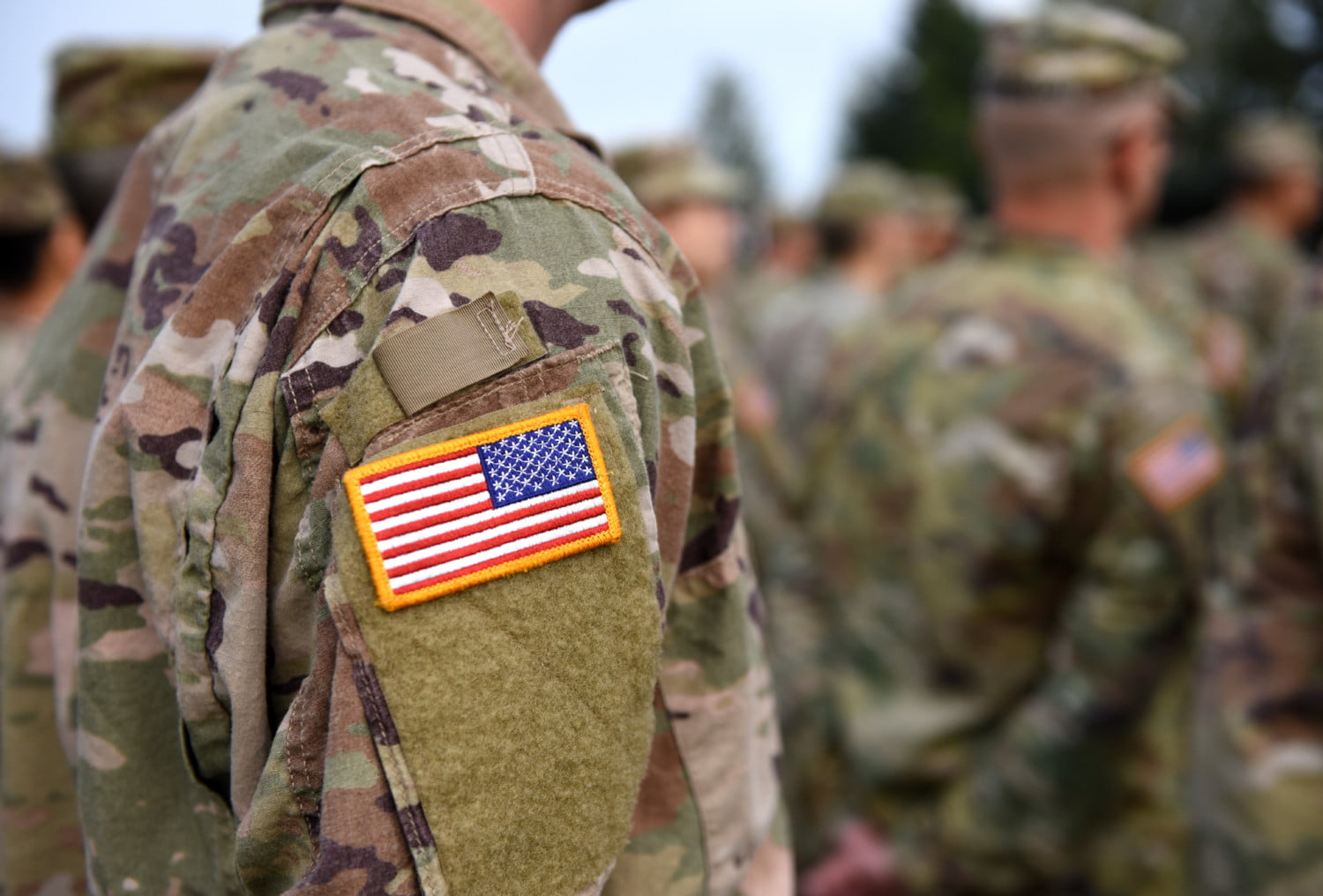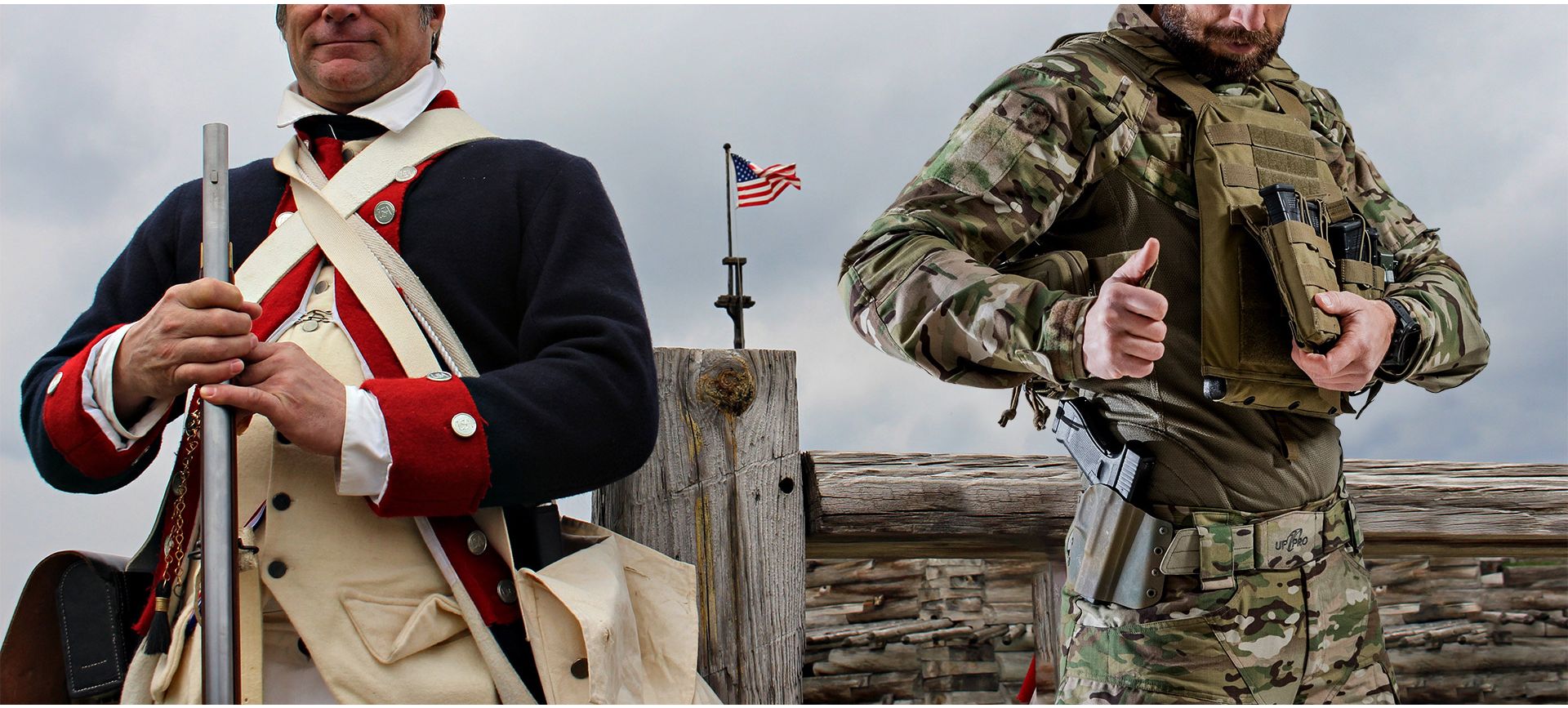Understanding the Backward Placement of the US Flag on Military Uniforms

The Reason Behind the Backward US Flag on Military Uniforms - Revealing the intriguing historical significance and symbolism of why the American flag appears reversed on military uniforms, this article delves into the rich traditions and protocols that govern its placement. Discover the hidden meaning behind this distinctive emblem and its connection to the brave men and women who serve the United States. Explore the essence of patriotism and honor in the display of the backward US flag on military uniforms. Stay tuned for an enlightening journey through our nation's military history.
Historical Origins of the Backwards US Flag on Military Uniforms
The history behind the backwards US flag on military uniforms dates back to the early days of cavalry. The tradition started when cavalry soldiers would charge into battle with a flag attached to a pole carried on their right shoulder. As they charged forward, the flag appeared to be flying in the wind, symbolizing the forward momentum of the cavalry.
Why is the flag backwards? To maintain the appearance of the flag flying in the wind while soldiers were charging forward, it was necessary to reverse the design so that the stars would face forward and the stripes would flow in the direction of movement. This created the illusion that the flag was being carried in battle as if it were unfurled and caught by the wind.
Respect and Proper Display of the US Flag
The backwards US flag on military uniforms is not meant to be disrespectful or un-patriotic. On the contrary, it is a deliberate choice made to honor the flag and its symbolism. The reverse flag serves as a constant reminder that the men and women wearing the uniform are defending the values and principles represented by the flag.
What does it symbolize? The backwards US flag serves as a symbol of honor, bravery, and sacrifice. It signifies the unwavering dedication of the armed forces to protect and defend the United States and its citizens.
Why are the flags backwards on uniforms
The backward placement of the US flag on military uniforms is actually an intentional design choice that has a specific meaning. On the right shoulder of a military uniform, the flag appears to be reversed, with the stars towards the front and the stripes flowing towards the back. This may seem odd, but it is done for a very important reason.
The reason behind the backward placement of the flag is to create the illusion of the flag flying in the wind as the individual moves forward. When a flag is carried into battle or during a military operation, it is common for it to be attached to a pole and flown as it would be in normal circumstances. The flag appears to be flowing in the direction that the person is moving, which symbolizes progress and forward movement.
By reversing the flag on the right shoulder, the illusion of the flag flying in the wind is recreated. This is especially important for military personnel who are often in motion, as it allows the flag to always appear as though it is moving forward, regardless of which way the person is facing.
Another reason for the backward placement is to symbolize the flag "charging forward" as a reminder of the military's commitment to defending the nation and pushing forward in the face of adversity. It serves as a constant reminder of the dedication and bravery of the men and women who serve in the armed forces.
Overall, the backward placement of the US flag on military uniforms is a deliberate design choice that serves to create the illusion of the flag flying in the wind and symbolize the military's commitment to progress and forward movement. It is a powerful symbol that reminds us of the sacrifices and dedication of those who serve in the armed forces.
Uniformity and Tradition in the Armed Forces
Maintaining uniformity is an essential aspect of military tradition and discipline. The backwards US flag is part of this tradition and is worn consistently on all military uniforms across different branches and ranks. The uniformity in displaying the flag reinforces the sense of unity and camaraderie within the military.
Why is uniformity important? Uniformity in military dress code and appearance fosters a sense of professionalism, cohesion, and identity among service members. Additionally, it allows for easier recognition and identification of military personnel in various situations.
By adhering to the tradition of wearing the backwards US flag on military uniforms, service members pay homage to their country, demonstrate their commitment to duty, and strengthen the unity of the armed forces.
Questions asked by our uniform blog followers
Why is the US flag backwards on military uniforms?
The US flag is often displayed in reverse on military uniforms in specific situations to adhere to a tradition known as the "Field of Battle" or "Reverse Field" rule. This rule states that the stars should always be positioned closest to the front of the wearer, symbolizing the flag being carried forward into battle.
When the flag is worn on the right shoulder or sleeve of a military uniform, it appears backward with the canton (blue field with stars) toward the observer's right. This creates the illusion that the flag is blowing in the wind as the wearer moves forward, rather than being in retreat.
This practice originated from cavalry units, where flags were commonly mounted on poles carried on horseback. As the cavalry charged into battle, the flag would naturally flow backward due to the momentum. Over time, this tradition has been extended to other branches of the military.
It's important to note that this reverse flag display applies specifically to military uniforms and is not the standard protocol for civilian displays of the US flag. In official ceremonies and non-military settings, the US flag is always displayed with the canton towards the observer's left.
What is the significance of the reversed US flag patch on military uniforms?
The reversed US flag patch on military uniforms carries a significant meaning. It is commonly referred to as the "reverse field" or the "backwards flag." The purpose of wearing the US flag in this manner is to give the appearance that the flag is flying while the person is in motion. When soldiers wear the flag on their right shoulder or sleeve, it creates the illusion that the flag is streaming behind them as they move forward.
This practice originated from the tradition of placing flags on poles or vehicles, where the canton, the blue field with stars, is always seen in the direction of travel or in the front. In order to replicate this effect on uniforms, the flag is reversed.
The reversed flag is a symbol to represent forward movement and progress. It signifies that the wearer is part of an active duty military unit, always moving forward and advancing in the face of challenges. The flag, when worn in this manner, acts as a constant reminder of the commitment and dedication of the individual serving in the armed forces to protect and defend the United States.
It's important to note that the reversed flag patch is specific to the right shoulder or sleeve of the uniform. The regular, non-reversed US flag patch should still be worn on the left side of the uniform, near the heart, to symbolize the country's values and ideals that soldiers are sworn to protect.
Overall, the reversed US flag patch on military uniforms serves as a powerful symbol of patriotism, dedication, and forward movement, signifying the wearer's commitment to defending their country.
How did the tradition of wearing the US flag backwards on military uniforms originate?
The tradition of wearing the US flag backwards on military uniforms originated from a long-standing custom rooted in military history. When a soldier or service member marches forward, the flag is designed to appear as if it is blowing in the wind as they charge into battle. In order to achieve this effect, the flag is reversed, with the stars facing forward and the stripes flowing backward.
This tradition dates back to the cavalry units of the American frontier in the 19th century. At that time, cavalry soldiers would wear their national flag on their right shoulder, attached to their uniforms. Since the flag was on a staff, it would naturally fly backwards as the rider moved forward.
This practice became standardized during World War II when the US Army re-introduced the "battle dress" uniform for the first time since World War I. The idea was to pay homage to the historical practices of the cavalry while also allowing for easy identification of friendly forces on the battlefield.
It's important to note that this tradition only applies to the right shoulder of the uniform. The standard orientation of the US flag, with the stars on the upper left, is still maintained on the left shoulder and other displays of the flag.
In summary, the tradition of wearing the US flag backwards on military uniforms originated from the historical practices of cavalry units, aiming to create the appearance of the flag blowing in the wind as soldiers march forward.
In conclusion, the backward placement of the US flag on military uniforms is not a design error or a sign of disrespect, but rather a deliberate and meaningful choice. The purpose behind this unique arrangement is to ensure that as our servicemen and women march forward into battle, the flag appears as if it is flying in the wind, symbolizing the resilience and unwavering spirit of our nation. This clever adaptation showcases the attention to detail and deep symbolism embedded in military uniforms, further emphasizing the pride, honor, and unity that the American flag represents. So, the next time you see a soldier proudly wearing their uniform with a backward flag, remember the significance behind this intentional display. Let us continue to honor and respect the brave men and women who serve and protect our country, both in their valiant actions and their meticulous attention to every detail of their uniform.








